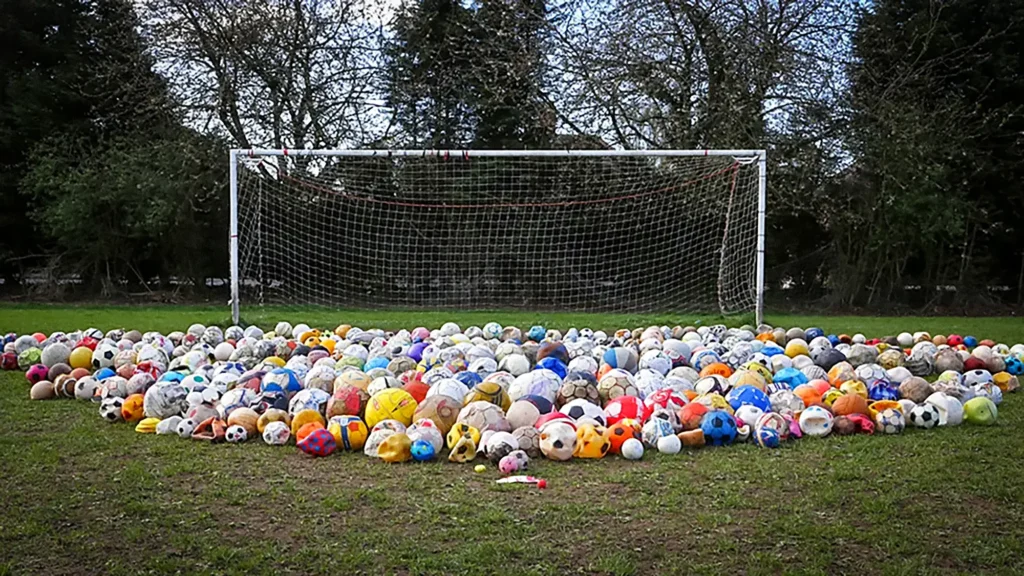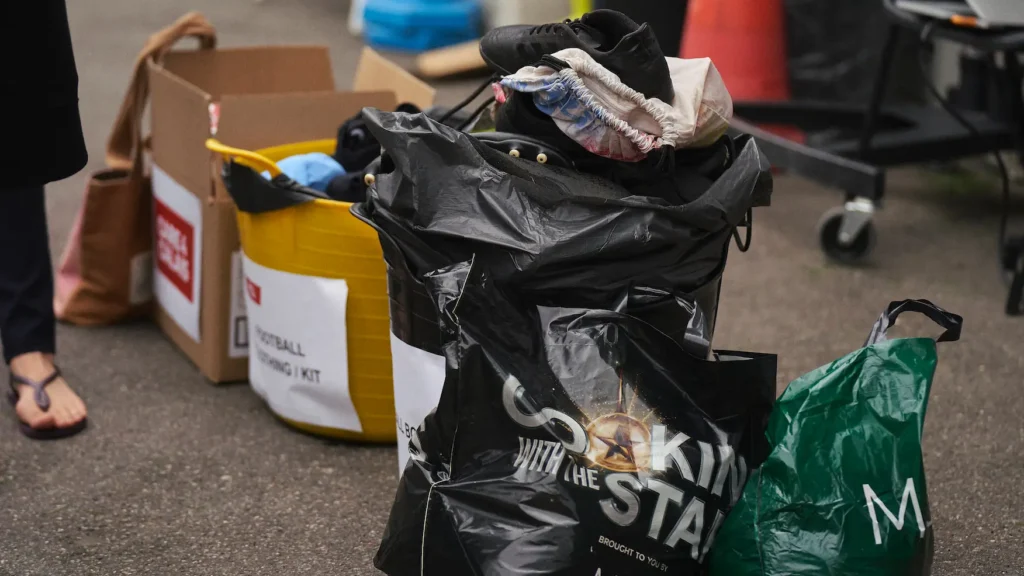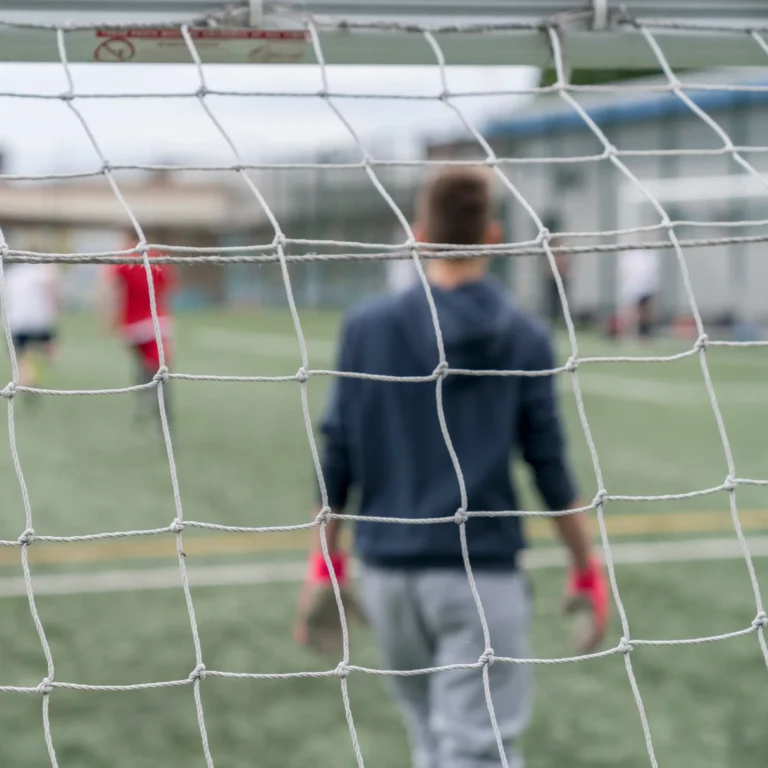Why sustainable Football matters for the environment and community
Everyone loves a good kickabout but have you ever wondered what happens to all those balls that fly over the fence? The ones that vanish for good? If you’ve played at certain pitches, you’ll know exactly the ones we mean. Many of those lost balls don’t just disappear. They end up as litter in bushes, rivers, parks and sometimes even the ocean.
In fact, nearly 1,000 lost footballs were found washed up on beaches around the world in just four months (Project PENALTY, Mandy Barker). With over 40 million footballs produced globally each year, that’s a lot of potential waste. At Football for All, we believe even small changes at our local pitches can make the game we love greener and more sustainable. Here are five easy fixes to make football more eco-friendly.

1. Raise the fencing height to keep balls in
One straightforward way to cut down on lost balls is to raise the height of pitch fencing. Many community pitches have way too low fences, so a slightly high shot sends the ball sailing out. By installing higher perimeter fencing (or extensions on existing fences), we keep more balls in play and out of rivers, roads, railway tracks and neighbours’ gardens. It’s good for the planet and also keeps people safe and happy while they play. Nobody enjoys fetching a ball from a busy street or a prickly hedge and neighbours certainly don’t appreciate constant interruptions.
In one extreme case, a school in Hampshire had about 170 footballs fly into a neighbour’s garden over 11 months. Just imagine the frustration. The school added taller fences and netting, which dramatically cut down the escapes. Raising the fences even a couple of metres can prevent most stray balls. It means fewer replacements to buy (saving money) and less plastic waste in the long run. This simple fix helps to keep our footballs where they belong, on the pitch and in the game.
2. Add roof netting over play areas
With roof netting, even the wildest kick can’t escape. Many 5-a-side pitches and urban football cages use roof nets for exactly this reason. It keeps the game continuous and the surroundings safe. For schools and leisure centres, adding a mesh roof (even partial, like over goals or key sections) can drastically reduce ball loss. Think of it as putting a lid on the pitch. No more climbing fences or apologising to pedestrians for a ball landing at their feet!
If you really want to guarantee zero lost balls, roof netting is the ultimate solution. We organise 2,500 games every month at Football for All, and from experience, pitches with high fencing and roof netting really help make football safer, cleaner and more enjoyable for everyone.
3. Put extra effort by danger zones
Every pitch has its danger zones. Those spots where a ball is almost guaranteed to get lost or damaged. It might be a gap in the fence leading to a busy road, a neighbouring garden with a high wall or a thicket of bushes and trees (the classic ball-eating hedge!). Venues should take time to identify hazard areas and give them extra attention. Spotting these problem zones is the first step. Once we know where the hotspots are, we can take simple steps to protect them.
For example, if there’s a stream or river beside the pitch, adding a fine mesh barrier and clear signs to remind players to be careful can make a real difference, especially during games. In one famous case, a club in Shrewsbury built next to the River Severn hired a person with a boat to retrieve balls that fell in the water. That’s how seriously they took their danger zone!
4. Empty the Football “Graveyards”
Over the weeks, most pitches accumulate a hidden treasure of perfectly good balls that just need a wash and a pump. These forgotten footballs pile up on school roofs, in locked alleyways or tangled in hedgerows. It’s time to bring those balls back from the dead! You might be amazed at what you find. One local Football for All group was stunned to pull over a dozen old balls from a creek alongside their pitch in one afternoon. By retrieving these old balls, we accomplish two things.
First, we tidy up the environment (those balls won’t turn into trash hurting wildlife) and second, we suddenly have a stack of usable balls again. Even if a ball is waterlogged or punctured, getting it out of nature is still a victory.
By emptying local football graveyards, we stop contributing to that global debris. Plus, seeing how many were lost can motivate everyone to double down on points #1, #2, and #3 to stop the cycle. It’s a rewarding fix because you tidy up the community, save usable balls and learn where to improve local pitch’s defences. We all take responsibility and show that our community cares for its green spaces.
5. Set up Football recycling points
Not every football can be saved forever. Eventually, even the best ball will puncture or wear out. Instead of chucking old balls, boots and other equipment in the bin, set up a football recycling point at your venue. This could be as simple as a clearly labelled wheelie bin or a box where people can drop off unwanted kit, boots or balls.
The idea is to make it just as easy to recycle an equipment as it is to buy a new one. Once a batch is collected, there are a few eco-friendly options to consider. First, see if any balls are still playable and donate them to youth teams, charities or dog shelters (for use as toys). They might be happy to have them.
Even the Premier League clubs do this. They reuse the same balls in training and matches and pass on extras to academies and community programmes. For balls that are truly at the end of their life, there are recycling schemes. Some companies offer programmes to process sports balls, separating the materials for reuse. It might cost a little but perhaps local sports shops or councils have recycling initiatives to tap into.
Another creative idea is upcycling. Old footballs can become planters, playground decorations or art projects. The key is to keep them out of landfills. By establishing a recycling point, we raise awareness that footballs are not “single-use” items. We also invite players, parents, venues to be part of the solution. Our love for the game goes hand in hand with love for our planet.

Can we make Football more eco-friendly?
Making football more eco-friendly doesn’t require an extra programme or a big budget. As we’ve seen, a few commonsense fixes can have a huge impact. When we raise fences at local pitches, add a bit of netting, watch those danger zones, rescue lost balls and recycle old ones, we’re showing pride in our community and respect for the environment. These changes are simple and translate into cleaner parks, fewer wildlife hazards and more resources saved. At Football for All, our mission is to bring people together through the beautiful game and part of that mission is keeping our pitches and neighbourhoods beautiful too.
If we want future generations to enjoy football as much as we do, we have to care for the pitches and their surroundings. Together, we can play our part (literally!) in protecting the environment. After all, a greener game is a win-win for everyone.
How else could football become more eco-friendly in your community? We’d love to hear your ideas and experiences. Let’s work as a team to make a greener, cleaner football future for everyone.


